It’s a bit of a pity that the former genus name has been dropped, as it aptly suggested the way in which the persistent old, dry leaves form a sceleton protecting the new leaves.
The creeping or scrambling plants have imbricate leaves (overlapping like the tiles of a roof); which are to 4 cm long and 2 cm wide, with the tips turned inwards.
The flowers are white to pale yellow, pale salmon or pale pink, about 2-3 cm in diameter; they have a short stalk and appear in July-October.
It is a widespread species, occurring under bushes or in the open from Namaqualand to Montagu and Aberdeen in both winter and summer rainfall areas; often on quartz.
As in other members of the genus, the plants contain the alkaloid mesembrymine and have medicinal properties. The fermented leaves are widely used as a sedative and to relieve pain such as toothache and stomach ache. The concoction can also cause drunkenness.
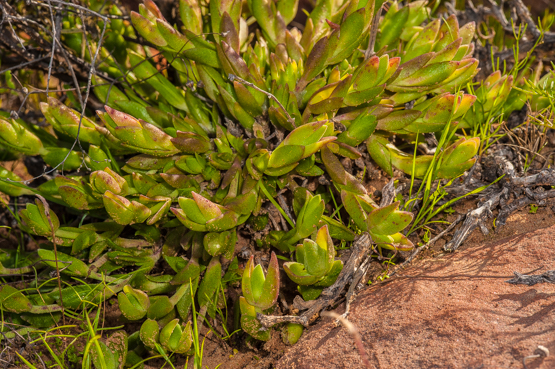
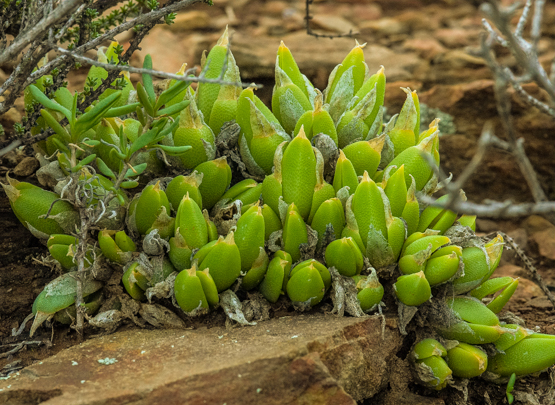
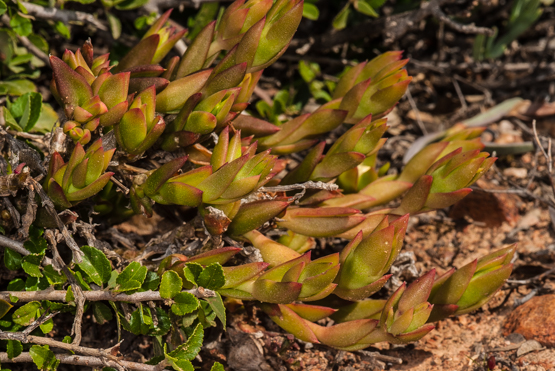
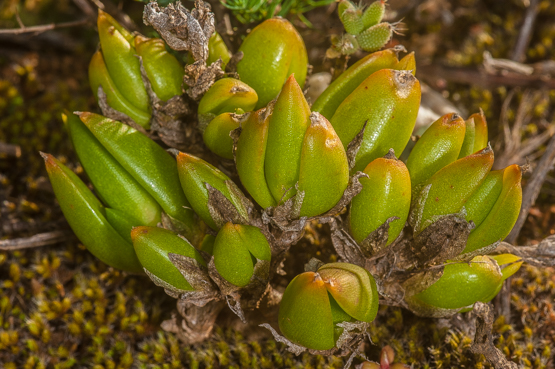
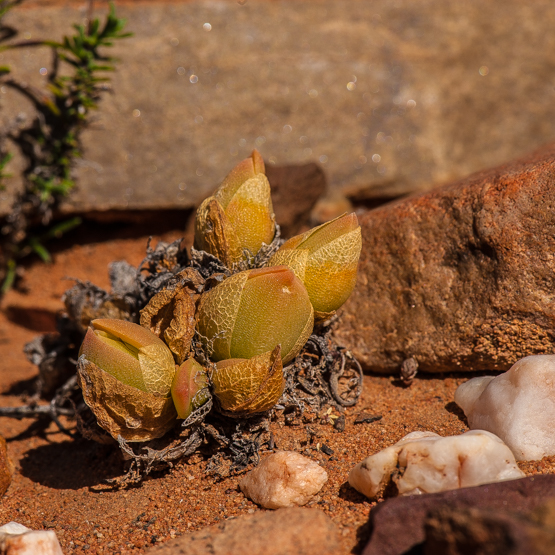

So cool!!!